

Collins English Dictionary. Smart Body Analyzer WS-50 - Introduction. The solar energy community. Trampoline. A youth bouncing on a trampoline The fabric that users bounce on (commonly known as the 'bounce mat' or 'trampoline bed') is not elastic in itself; the elasticity is provided by the springs that connect it to the frame, which store potential energy.
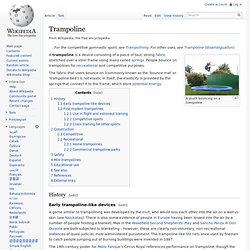
Welcome to Zeo Sleep Manager. Stationary bicycle. Stationary bicycle Magnetic resistance mechanism.

Bicycle trainer. A bicycle mounted on a CycleOps 'Fluid 2' trainer.
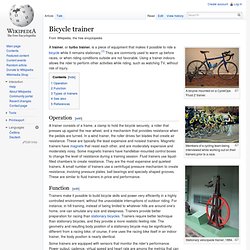
Members of a cycling team being interviewed while working out on their trainers prior to a race. Stationary velocipede trainer, 1884. LifeSpan TR1200-DT Treadmill Desk: Sports & Outdoors. Tanita Europe - Home. Yoga mat. Yoga mats are specially fabricated mats used as an aid during the practice of hatha yoga to prevent hands and feet slipping during asana practice.
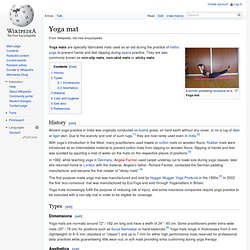
They are also commonly known as non-slip mats, non-skid mats or sticky mats. History[edit] Ancient yoga practice in India was originally conducted on kusha grass, on hard earth without any cover, or on a rug of deer or tiger skin. Due to the scarcity and cost of such rugs,[1] they are now rarely used even in India.[2] With yoga's introduction in the West, many practitioners used towels or cotton mats on wooden floors. In 1982, while teaching yoga in Germany, Angela Farmer used carpet underlay cut to towel size during yoga classes; later she returned home to London with the material. Find out more - the Withings scale. Spa. The term spa is associated with water treatment which is also known as balneotherapy.
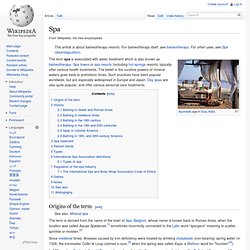
Spa towns or spa resorts (including hot springs resorts) typically offer various health treatments. The belief in the curative powers of mineral waters goes back to prehistoric times. Such practices have been popular worldwide, but are especially widespread in Europe and Japan. Day spas are also quite popular, and offer various personal care treatments. Origins of the term[edit] The term is derived from the name of the town of Spa, Belgium, whose name is known back to Roman times, when the location was called Aquae Spadanae,[1] sometimes incorrectly connected to the Latin word “spargere” meaning to scatter, sprinkle or moisten.[2] Desk. A desk is also known as a bureau, counter, davenport, escritoire, lectern, reading stand, rolltop desk, school desk, workspace or writing desk.[6] In Spanish a desk is called escritorio.[7] Etymology[edit] The word desk comes from the Modern Latin word desca, “table to write on”, from the mid 14th century.[8] It is a modification of the Old Italian desco table, from Latin discus dish, disc.[2] The word desk has been used figuratively since 1797.[8] Early desks[edit]

Refrigerator. Food in a refrigerator with its door open A side-by side refrigerator with an icemaker A refrigerator (colloquially fridge) is a common household appliance that consists of a thermally insulated compartment and a heat pump (mechanical, electronic, or chemical) that transfers heat from the inside of the fridge to its external environment so that the inside of the fridge is cooled to a temperature below the ambient temperature of the room.

Refrigeration is an essential food storage technique in developed countries. Lower temperatures in a confined volume lowers the reproduction rate of bacteria, so the refrigerator reduces the rate of spoilage. Home Safes, Fireproof Safes, Chubb Yale Burton Phoniex Safe. FREE Delivery. Concealing objects in a book. A hollowed out book, with bottle caps for scale.

There are many real and fictitious occurrences of concealing objects in a book. Freehold. From Wikipedia, the free encyclopedia Freehold may refer to: General real estate law (modern British, pertaining to any land so designated) British law regarding manors (modern and archaic) customary freehold, privileged copyhold or copyhold of frank tenure Church of England Vernacular use (common speech), British middle ages.
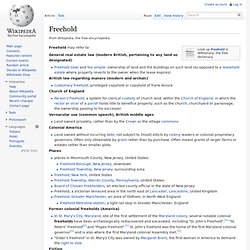
Wi-Fi. Wi-Fi, also spelled Wifi or WiFi, is a technology that allows an electronic device to exchange data or connect to the internet wirelessly using 2.4 GHz UHF and 5 GHz SHF radio waves.
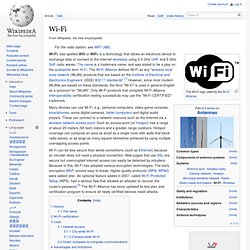
The name is a trademark name, and was stated to be a play on the audiophile term Hi-Fi. The Wi-Fi Alliance defines Wi-Fi as any "wireless local area network (WLAN) products that are based on the Institute of Electrical and Electronics Engineers' (IEEE) 802.11 standards".[1] However, since most modern WLANs are based on these standards, the term "Wi-Fi" is used in general English as a synonym for "WLAN". Only Wi-Fi products that complete Wi-Fi Alliance interoperability certification testing successfully may use the "Wi-Fi CERTIFIED" trademark. Depiction of a device sending information wirelessly to another device, both connected to the local network, in order to print a document. Wi-Fi can be less secure than wired connections (such as Ethernet) because an intruder does not need a physical connection.
Mirror. A first surface mirror coated with aluminum and enhanced with dielectric coatings. The mirror was constructed from an optical flat with a flatness of /20, which equates to a surface deviation less than 31.6 nanometers. Some mirrors also filter out some wavelengths, while preserving other wavelengths in the reflection. This is different from other light-reflecting objects that do not preserve much of the original wave signal other than color and diffuse reflected light. The most familiar type of mirror is the plane mirror, which has a flat surface.